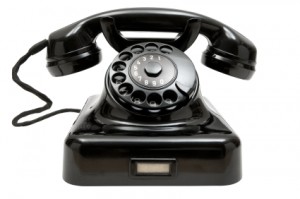Marketing Guides
Campaigns & Execution
The Lost Art of Telemarketing
 The Internet has made B2B telemarketing nearly obsolete. Most marketers in this digital age don’t even consider using it in a campaign. Often that’s a mistake; phone calls can still be a very useful component in most B2B marketing campaigns.
The Internet has made B2B telemarketing nearly obsolete. Most marketers in this digital age don’t even consider using it in a campaign. Often that’s a mistake; phone calls can still be a very useful component in most B2B marketing campaigns.
In the telemarketing hey days of the eighties and nineties (i.e., before email), many companies used telemarketing for comprehensive lead generation and to handle much of the B2B selling process. As business culture evolved in the US, that style of telemarketing became less effective, causing telemarketing to vanish from the radar screen of most marketers.
A simple change in a marketer’s mindset can open up new opportunities to maximize this lost art, to increase conversion rates and get better campaign results.
What’s the change?
That’s easy: Use telemarketing to handle a simple, single task that’s part of a larger, integrated marketing campaign.
The Lost Art of Telemarketing in the Era of the Internet
These days, smart marketers are using a combination of media to promote their products and services. A popular combination includes:
- Pay-per-click
- Email marketing
- Telemarketing
- Webinar event
- Email marketing
- More telemarketing (or telesales)
This combination works well in many industries. The key to this sequence is the webinar, or any compelling presentation that your target market will find valuable. B2B selling often begins after educating the market about a solution for a prospect’s pain. It’s a consultative approach following the Solution Selling methodology, and it’s been the norm for many years in industries such as computer software, hardware, and professional services (we’ll discuss this more in a future article; for now I’ll stick to telemarketing).
In the above scenario, telemarketing is often the most effective way to drive attendance to the event; more effective than PPC, email marketing, or direct mail, even if you’re calling to a cold list! Consider this for a moment: How many emails do you receive in a typical business day? How many marketing offers do you receive that you flag for later follow-up (because they seem interesting), but never get back to? Telemarketing simplifies things because it involves interaction with a live person, thereby provoking an instant decision. If it is an interesting offer, it’s easier to just say yes and let the telemarketer handle the registration, rather than remembering to revisit that email later and handle it yourself.
The Key to Telemarketing Success (After Your List)
As you’re putting together the components of your campaign (never forgetting the cardinal rule of all direct marketing—Get a good list!), remember this: Keep the script short and to the point.
This is challenging for marketers with telemarketing experience from prior decades, as they often fall into the habit of creating lengthy Q & A up front for the purpose of needs analysis (which puts the call recipient on the defensive). Start with the end in mind! Present the offer first, and handle objections afterward if required.
Here’s an example script flow:
- Introduction – name and company
- Reason for call (one to two sentences)
- Presentation of offer
- Registration or objection rebuttals
- Secondary offer if no registration
- Tertiary offer and polite call closure
The crux of the call is covered within 30 seconds. We’re all busy and our attention spans are getting shorter, so less is more.
In this example, we use telemarketing as one way to drive attendance to the event and to follow-up later with attendees. If you’re not holding a webinar, consider other ways a succinct, direct conversation might help drive campaign conversions. Here are a few examples:
- Follow up on a product demo or information request
- Set sales appointments
- Place a thank you call to existing customers while uncovering potential cross-selling or up-selling opportunities
- Call a cold list to offer a free download of a whitepaper or a relevant information packet for lead generation
Still stuck? Think about any area where your email responses are below expectations. Be creative, and remember this: If your list is targeted, your offer valuable, your caller polite, and your script short and to the point, many of your targets will be pleased to hear from you.
You might just be surprised at your results.
TELEMARKETING TEMPLATES / MARKETING PLANS / PROJECT MANAGEMENT
EVERYTHING YOU NEED FOR YOUR TELEMARKETING PROJECT